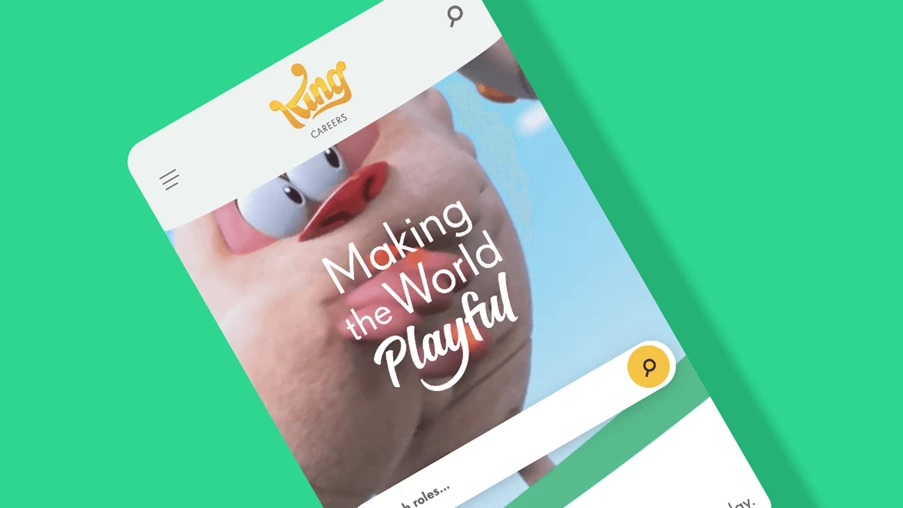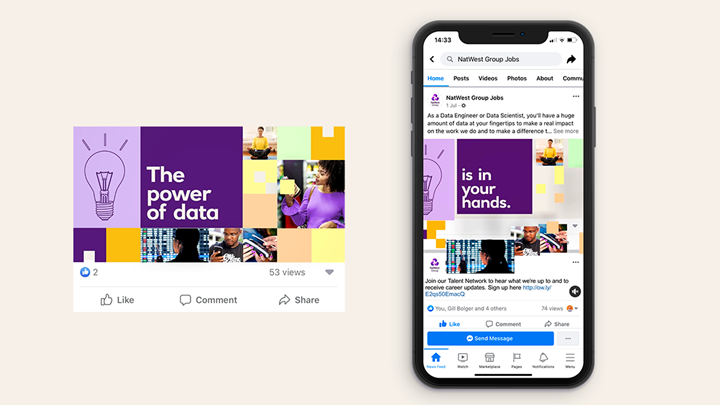How a Great Job Description Page Attracts Talent Like a Magnet
3 min read.A good job description page is vital for converting the right candidates for your vacancies. Learn how to enhance yours with great content and analysis tools..
In our recent articles about career site best practice we’ve touched upon the importance of certain features and structures to produce the best outcomes.
A correctly structured home page, for instance is, among many other components, vital for attracting a talent audience.
Another key landing page that is perhaps the most important when it comes to converting suitable candidates is the job description page.
The job description page is vital, because it's likely that candidates will arrive there from job boards, like LinkedIn, Indeed, or sites like Glassdoor.
When candidates come to a career site from another site, it's highly likely they will land on a job detail page to start with. What we try to do is enrich the job description details - usually with more about the role, the responsibilities and so on, in a bullet format that comes from an ATS system.
We use specific attributes of the job such as the structure of the team and location to be able to pull in content from other landing pages so that we can append the job description with extra content, such as the various benefits, more about the culture and so on.
Enriching the job description gives the candidate more insight into the company, with calls to action to try and learn more.
Recruiters know that candidates typically spend about seven hours researching whether or not to apply for a position. So if you can keep them on your career site, rather than going off to look at different social channels, or Glassdoor for information, then that will increase the chances of them applying.
Content is king. We provide our customers with a world class platform, but if they put rubbish in it, it’s akin to putting petrol in a diesel car. You've invested in technology, but you've got to also invest in creating content that will educate your candidates enough to be able to make an informed decision.
If the content is quite dense and lean, and it's not built for the audience, it won’t be effective in holding a job seeker’s attention and seeing them through to the application process.
In addition, high quality, engaging content sends ranking signals back to Google to say: “this content is good, the audience is engaged”, which improves the visibility of your open positions.
Stories from employees
We talk a lot about employee stories, about them being more authentic than content from a marketing or a copywriter writing about what a great place it is to work. When you hear it from somebody who does the job, then it feels like you have a more realistic sense of the organisation.
So, we always encourage our customers to create people stories, employee stories, tie them to a team and a location. And then when the job comes in, and it matches that attribute, we can append the job description with these stories to provide more about a specific role.
If you’re looking for a job, you want to get a real sense of what the day to day is. Sure, you can read about the benefits and the values, the management, the culture, but when you get to hear from the people who are on the floor who actually do that job day to day, it’s so much more authentic
And when it's in video format, then it's even more real, because they can hear it direct from those individuals and they get even more of a sense of the company culture and the reality of the role.
Video is so powerful and there are plenty of tools you can use to create great content such as ICIMS, which a lot of companies use to create employee testimonial videos. It links content to specific roles, teams or locations to present the right video for a specific vacancy. You don’t necessarily have to budget for high production value filming either. Some of it can be done on a phone and then edited.
Including pay transparency
Pay transparency, and whether a job ad should include salary specifics is an ongoing debate. In the US it is now mandatory in several states to include a salary range for every job opening and it is likely to spread elsewhere too. Many people would argue it is long overdue and it’s likely that the genie is out of the bottle on that issue now. In fact, LinkedIn listed pay transparency as one of its Big Ideas That Will Change the World this year.
We think it's a good thing to add, because the candidate can make a decision really quickly about whether it’s right for them. It will also save hiring managers time instead of going back and forth when asked for salary requirements.
A lot of our customers enquire about including it.
When we pull a job in from an ATS system, we pull the job description and lots of other fields, like the location, the team, contract type and so on. And the easiest thing to do is just append it to the job description, and include it within the content. Some customers are adding it as separate fields and in the database, there's a minimum range and a maximum range. Much depends on what data they have available.
Potentially, they might want to add a filter for a job between a certain salary range, or use drop-downs, or whatever. But the simplest way is just to add it to their job descriptions.
Job page grading
Tools like Jobpagegrader which measures the quality of job descriptions are really useful. And free.
It looks under the hood of the whole page. Analysing things like engagement, conversion, SEO, performance, readability and language bias and gives it an overall score.
A customer can't really fix JavaScript issues or improve Schema markup. That's for us, as a developer, however, the customer is in control of the quality of their job description. So they can improve elements such as the gender bias and make it neutral by removing specific words or not use certain words for instance.
We work with a lot of customers who don't necessarily have a really good employer brand, are trying to work on one or they think that what they've got is an employer brand. But we're trying to try to influence them and tell them they need this type of content, diversity and inclusion, CSR, and all this kind of stuff to educate the candidates.
Ultimately, we advise our customers to create content that educates and engages, and is also really good for SEO, bringing traffic to the site so you can keep candidates there. And then through that engagement, convert them.
Don’t spend time chasing candidates. Build a great careers site, populate it with great content and they will come to you.



